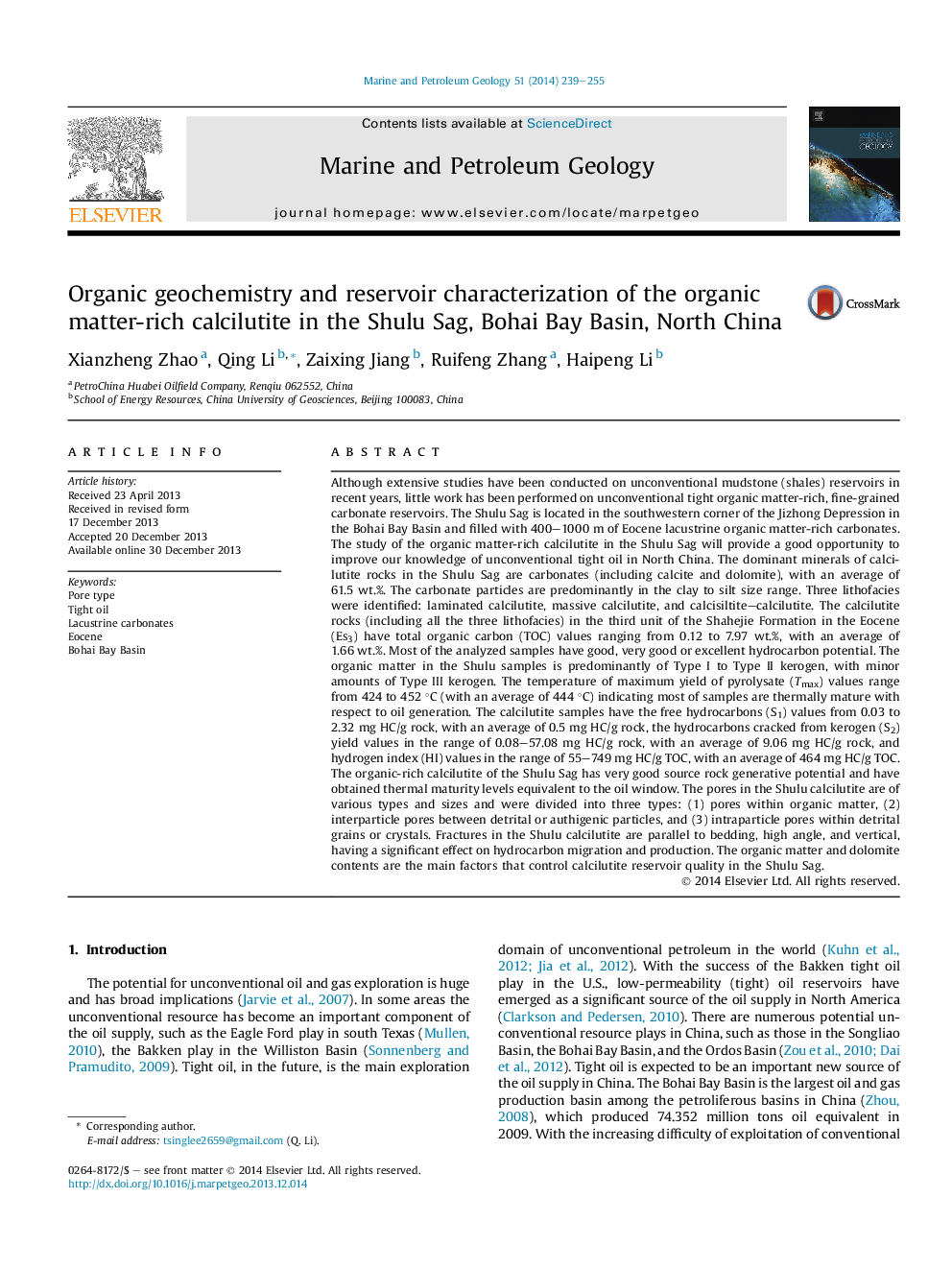| کد مقاله | کد نشریه | سال انتشار | مقاله انگلیسی | نسخه تمام متن |
|---|---|---|---|---|
| 6435318 | 1637173 | 2014 | 17 صفحه PDF | دانلود رایگان |
- The Shulu calcilutite acts as both a source rock and a reservoir for oil.
- The Shulu calcilutite has great original hydrocarbon generative potential.
- Organic matter pores can develop in carbonate rocks.
- Organic matter content has great effect on the reservoir quality of calcilutites.
- Porosity is commonly more developed in dolomite area than surrounding calcites.
Although extensive studies have been conducted on unconventional mudstone (shales) reservoirs in recent years, little work has been performed on unconventional tight organic matter-rich, fine-grained carbonate reservoirs. The Shulu Sag is located in the southwestern corner of the Jizhong Depression in the Bohai Bay Basin and filled with 400-1000 m of Eocene lacustrine organic matter-rich carbonates. The study of the organic matter-rich calcilutite in the Shulu Sag will provide a good opportunity to improve our knowledge of unconventional tight oil in North China. The dominant minerals of calcilutite rocks in the Shulu Sag are carbonates (including calcite and dolomite), with an average of 61.5 wt.%. The carbonate particles are predominantly in the clay to silt size range. Three lithofacies were identified: laminated calcilutite, massive calcilutite, and calcisiltite-calcilutite. The calcilutite rocks (including all the three lithofacies) in the third unit of the Shahejie Formation in the Eocene (Es3) have total organic carbon (TOC) values ranging from 0.12 to 7.97 wt.%, with an average of 1.66 wt.%. Most of the analyzed samples have good, very good or excellent hydrocarbon potential. The organic matter in the Shulu samples is predominantly of Type I to Type II kerogen, with minor amounts of Type III kerogen. The temperature of maximum yield of pyrolysate (Tmax) values range from 424 to 452 °C (with an average of 444 °C) indicating most of samples are thermally mature with respect to oil generation. The calcilutite samples have the free hydrocarbons (S1) values from 0.03 to 2.32 mg HC/g rock, with an average of 0.5 mg HC/g rock, the hydrocarbons cracked from kerogen (S2) yield values in the range of 0.08-57.08 mg HC/g rock, with an average of 9.06 mg HC/g rock, and hydrogen index (HI) values in the range of 55-749 mg HC/g TOC, with an average of 464 mg HC/g TOC. The organic-rich calcilutite of the Shulu Sag has very good source rock generative potential and have obtained thermal maturity levels equivalent to the oil window. The pores in the Shulu calcilutite are of various types and sizes and were divided into three types: (1) pores within organic matter, (2) interparticle pores between detrital or authigenic particles, and (3) intraparticle pores within detrital grains or crystals. Fractures in the Shulu calcilutite are parallel to bedding, high angle, and vertical, having a significant effect on hydrocarbon migration and production. The organic matter and dolomite contents are the main factors that control calcilutite reservoir quality in the Shulu Sag.
Journal: Marine and Petroleum Geology - Volume 51, March 2014, Pages 239-255
